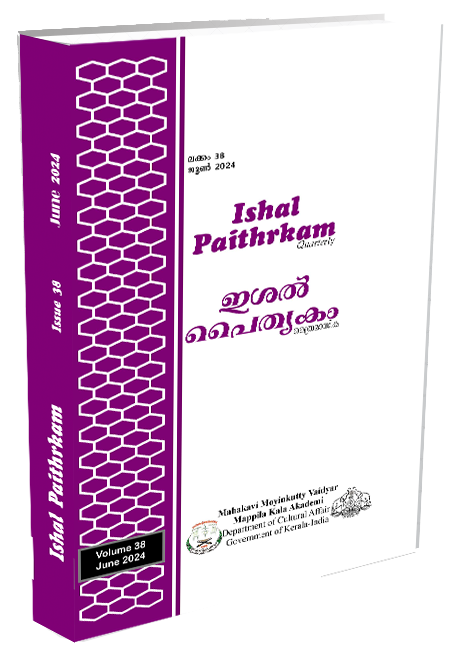Indugopan’s Gendered Spaces: A geo-spatial reading of ‘Twinkle Rosayum Panthrandu Kaamukanmaarum’ and ‘Pushpavalliyum Yakshivasanthayum’
Keywords:
Gender, Resistance, Space, Body, PositionAbstract
The spatial turn in Humanities foregrounded the importance of locales in fiction and the study of history and culture. Space was now seen as a plot element that played an important role in directing narratives and the arcs of characters in fiction. This paper attempts to critically locate and analyse geographical places in the work of G. R. Indugopan, an author in Malayalam. The short stories titled, ‘Twinkle Rosayum Panthrandu Kaamukanmaarum’ and ‘Pushpavalliyum Yakshivasanthayum’ will be analysed as short stories that gives life to the immediate spatial environment and how it impacts the characters inhabiting them. This paper attempts to look at the relationship between[female] bodies and space and how its positioning creates a distinctive spatial practice by closely looking at the different geographies that the author attributes to the characters in the selected short stories. It also looks at how new discourses of power and resistance are created against attempted invasions of body and space.
Downloads
References
Brosseau, M. (2000). In, of, Out, With, and Through: New Perspectives in Literary Geography.
In R. Tally Jr (Ed.), The Routledge Handbook of Literature and Space (pp. 9–27).
Grosz, E. (1997). Bodies/Cities [EPub]. In B. Colomina (Ed.), Sexuality and Space: Princeton Papers on Architecture (pp. 240–242). Princeton Architectural Press.
Indugopan, G.R. (2019). Szn¦nÄ tdmkbpw ]{´p ImapI·mcpw [Twinkle Rosayum Panthrandu Kaamukanmaarum; Twinkle Rosa and her Twelve Lovers]. DC books.
Lefebvre, H. (1992). The Production of Space (D. Nicholson Smith, Trans.; 1st ed.). Wiley-Blackwell.
Marion Young, I. (2005). Throwing Like a Girl: A Phenomenology of Feminine Body Comportment, Motility, and Spatiality. In On Female Body Experience: Throwing Like a Girl and Other Essays (pp. 40–44). Oxford UP.
Norberg-Schulz, C. (1979). Genius Loci: Towards a Phenomenology of Architecture. https://ci.nii.ac.jp/ncid/BA00446954
Sasikumar, H. (2020). Social Spaces and the Public Sphere: A Spatial-history of Modernity in Kerala, India [Dublin City University]. https://doras.dcu.ie/24686/
Soja, E. W. (2009). The City and Spatial Justice. Justice Spatiale| Spatial Justice. https://www.jssj.org/wp-content/uploads/2012/12/JSSJ1-1en2.pdf
Soja, E. (2008). Taking Space Personally. In B. Warf & S. Arias (Eds.), The Spatial Turn: Interdisciplinary Perspectives (pp. 11–35). Routledge.
Simonsen, K. (2005). Bodies, Sensations, Space and Time: The Contribution From Henri Lefebvre. Geografiska Annaler Series B, Human Geography, 87(1), 4–6. https://www.jstor.org/stable/3554441
Stewart, L. (1995). Bodies, Visions and Spatial Politics: A Review of Henri Lefebvre’s The Production of Space. Environment and Planning D: Society and Space, 13, 609–618.
Warf, B., & Arias, S. (Eds.). (2008). Introduction: The Reinsertion of Space into the Social Sciences and Humanities. In The Spatial Turn: Interdisciplinary Perspectives (pp. 1–10). Routledge. https://doi.org/10.4324/9780203891308
Woolf, V. (2014). A Room of One’s Own [Kindle]. In A Room of One’s Own and Three Guineas (Vols. 3–5). Maple Press.
Additional Files
Published
Issue
Section
License
Copyright (c) 2025 ISHAL PAITHRKAM

This work is licensed under a Creative Commons Attribution-NoDerivatives 4.0 International License.

